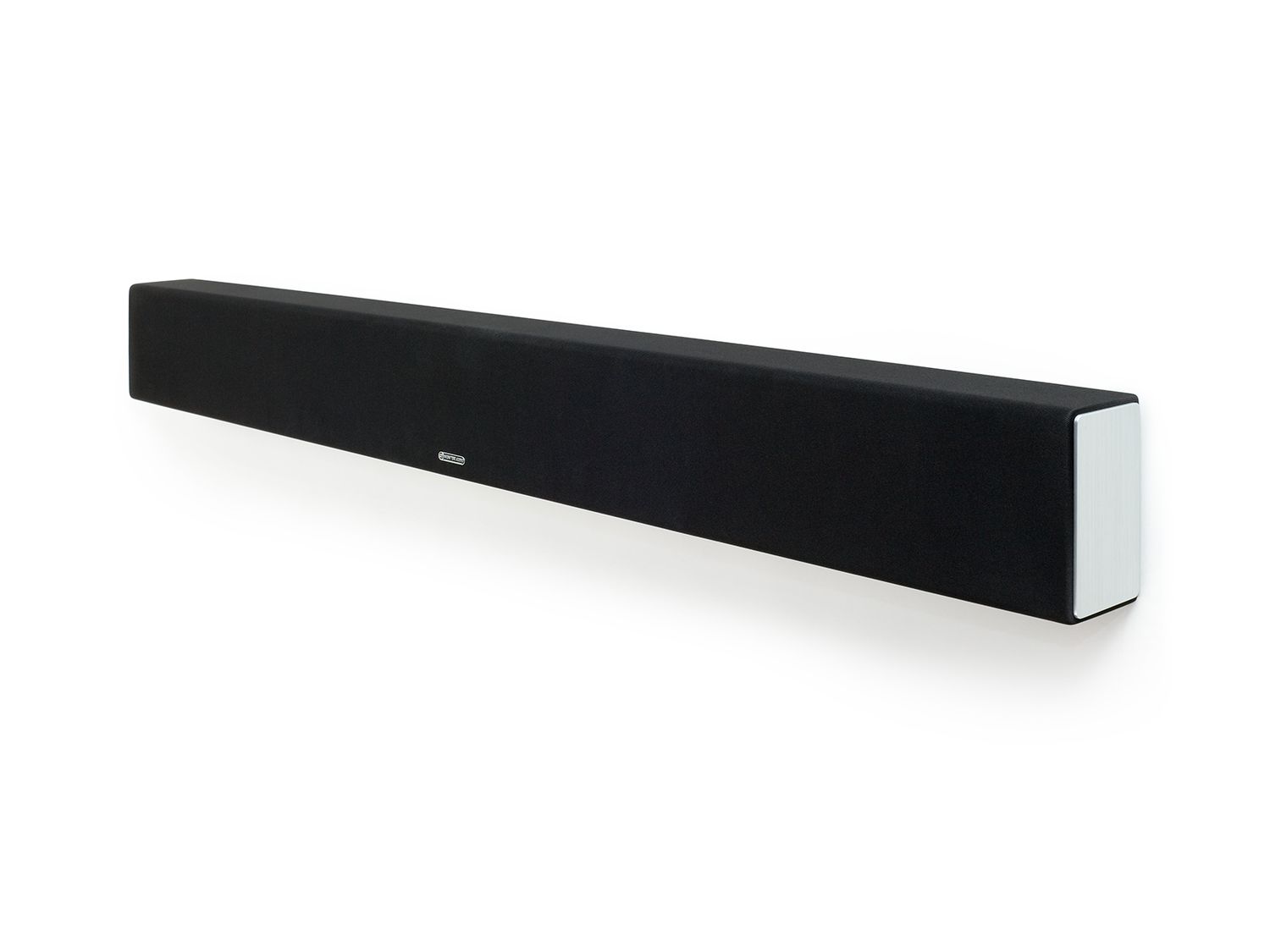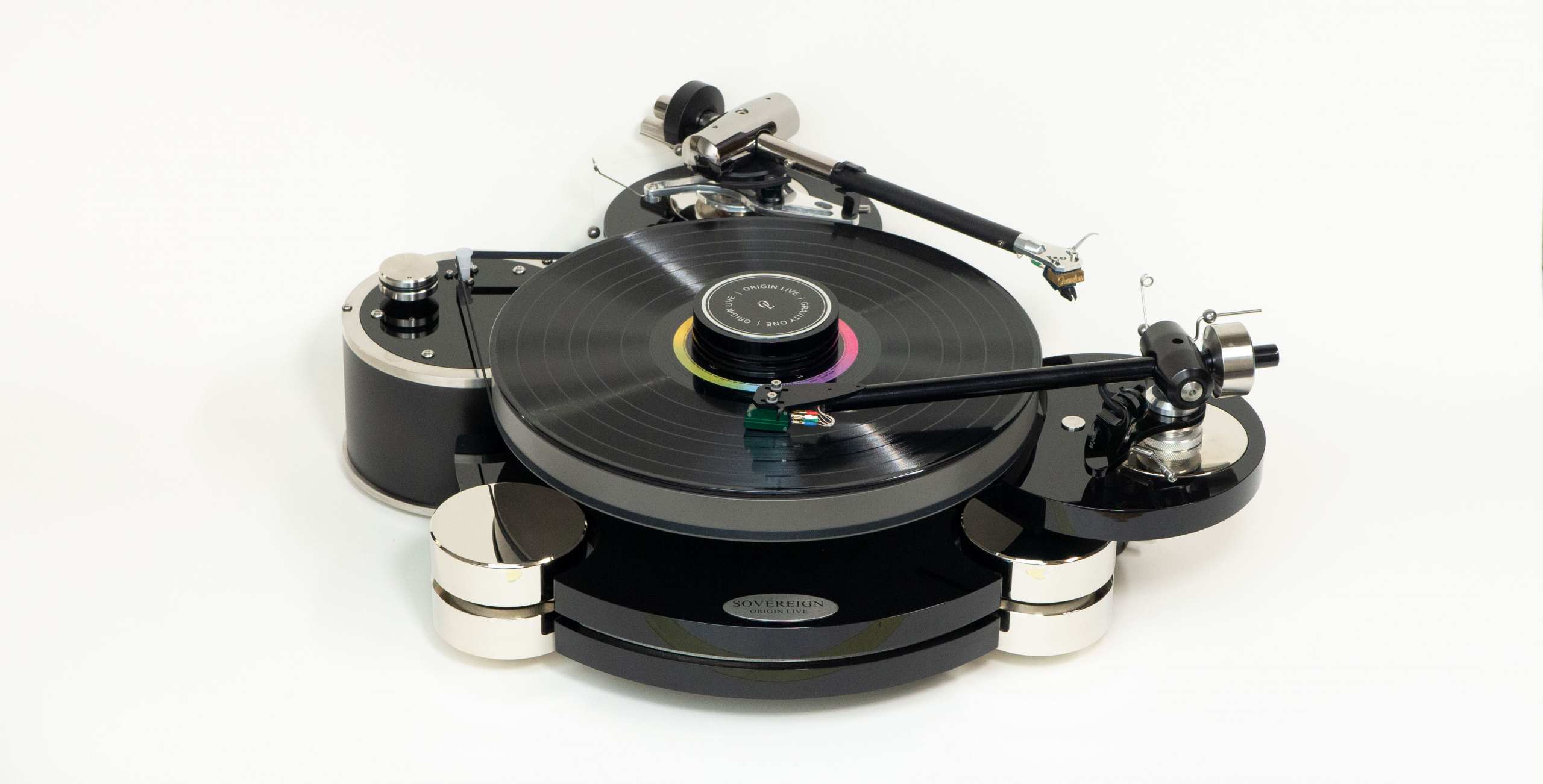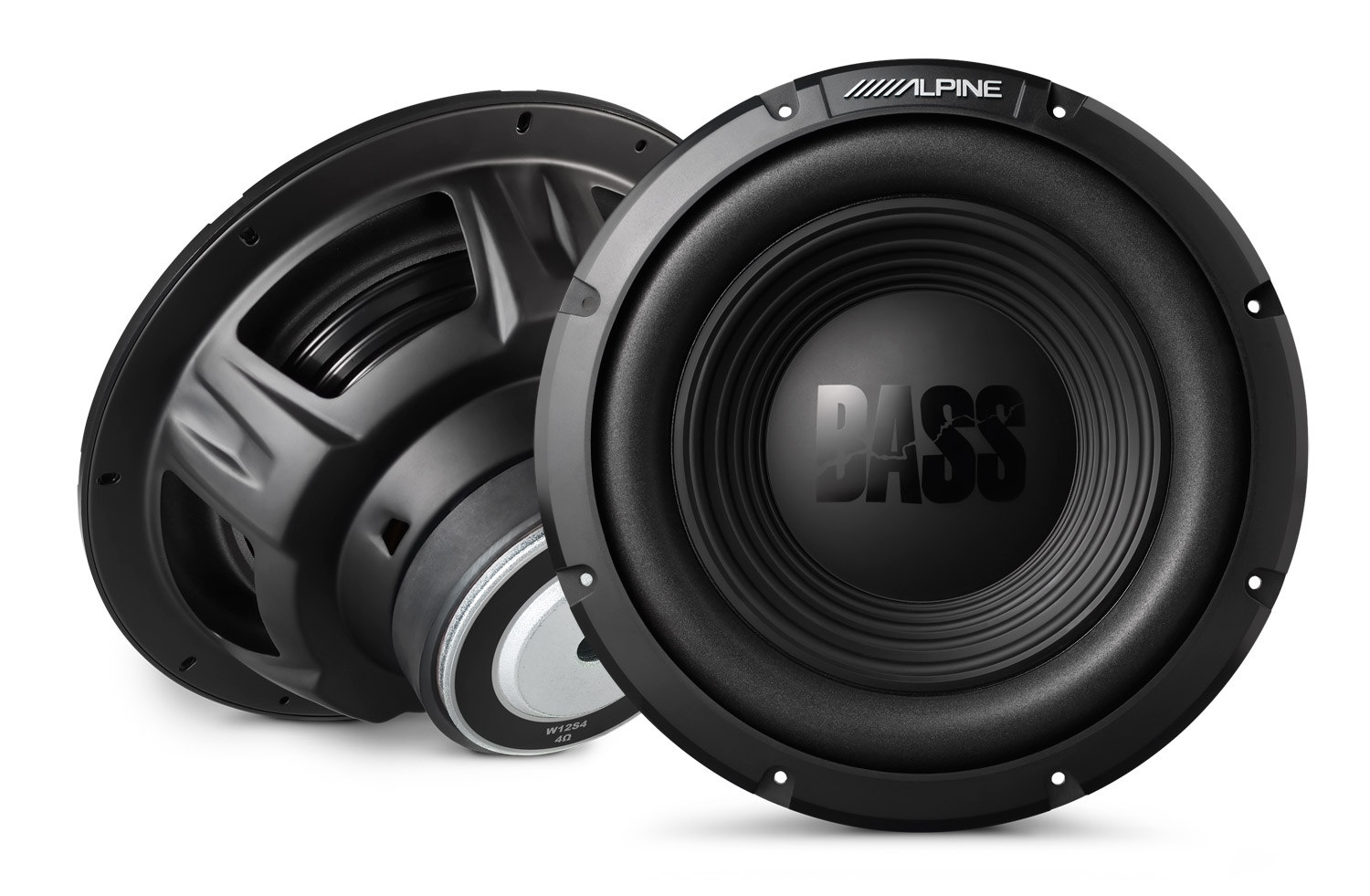Home>Production & Technology>Sound Bar>Sound Bar Vs Home Theater Which Is Best


Sound Bar
Sound Bar Vs Home Theater Which Is Best
Modified: January 22, 2024
Discover the pros and cons of sound bars compared to home theater systems. Find out which option is best for your audio needs.
(Many of the links in this article redirect to a specific reviewed product. Your purchase of these products through affiliate links helps to generate commission for AudioLover.com, at no extra cost. Learn more)
Table of Contents
Introduction
When it comes to enhancing your home audio experience, there are two popular options to choose from: a sound bar or a home theater system. Both offer unique features and benefits, but how do you determine which one is best for you?
A sound bar is a sleek and compact speaker system that is designed to improve the audio quality of your TV. It is typically a long, thin device that can be easily mounted on a wall or placed in front of your TV. On the other hand, a home theater system consists of multiple speakers strategically placed around the room to create a fully immersive surround sound experience.
In this article, we will compare sound bars and home theater systems to help you make an informed decision on which is the best option for your audio needs. We will explore factors such as sound quality, surround sound experience, ease of setup, space and design, cost-effectiveness, and connectivity options.
Ultimately, the choice between a sound bar and a home theater system depends on your personal preferences, budget, and the space available in your home. By weighing the pros and cons of each option, you can find the audio solution that will deliver the best listening experience for your entertainment needs.
So, let’s dive into the details and see how sound bars and home theater systems compare in terms of sound quality, surround sound experience, ease of setup, space and design, cost-effectiveness, and connectivity options.
What is a Sound Bar?
A sound bar is a speaker system that is designed to deliver high-quality audio for your television. It is a compact and streamlined device that typically consists of multiple speakers housed in a single unit. The purpose of a sound bar is to enhance the audio from your TV, providing a more immersive and enjoyable listening experience.
Sound bars come in various sizes and designs, but they are generally long and slender in shape. They can be easily placed in front of your TV or mounted on the wall for a sleek and clutter-free setup. Some sound bars also come with a wireless subwoofer to enhance the bass response and create a more robust sound.
One of the advantages of a sound bar is its simplicity. It is easy to set up and does not require running wires or positioning multiple speakers around the room like a home theater system. With just a single device, you can significantly improve the audio quality of your TV without the need for complicated installation.
Sound bars are also known for their versatility. They can be connected to your TV through a variety of methods, including HDMI, optical, or Bluetooth. This means you can easily connect other audio sources, such as your smartphone or tablet, to the sound bar for a seamless listening experience.
Furthermore, many sound bars come with different sound modes that allow you to customize the audio output to suit your preferences. Whether you’re watching a movie, listening to music, or playing video games, you can adjust the sound settings to optimize the audio for the specific content.
While sound bars offer an improvement over the built-in speakers of your TV, it is important to note that they may not provide the same level of immersion and depth as a full home theater system. However, they are a popular and practical choice for those who want to enhance their audio experience without the complexity and cost of a complete home theater setup.
In the next sections, we will compare sound bars to home theater systems in terms of sound quality, surround sound experience, ease of setup, space and design, cost-effectiveness, and connectivity options to help you decide which option is best suited for your needs.
What is a Home Theater System?
A home theater system is a comprehensive audio setup that is designed to replicate the immersive experience of a movie theater in the comfort of your own home. It typically consists of multiple speakers strategically placed around the room, along with a receiver or amplifier to control and distribute the audio signals.
The key feature of a home theater system is its ability to deliver surround sound. Surround sound creates a three-dimensional audio environment by using multiple speakers to reproduce sound from different directions. This includes sounds coming from the front, sides, and rear, providing a more realistic and immersive audio experience.
A typical home theater system includes a center speaker positioned above or below the television, two front speakers placed to the left and right of the TV, two rear speakers placed behind the seating area, and a subwoofer to deliver deep and powerful low-frequency effects.
In addition to the speaker setup, a home theater system also requires a receiver or amplifier to process and distribute audio signals to the speakers. The receiver acts as the central hub, allowing you to connect various audio sources such as your TV, Blu-ray player, gaming console, or streaming devices.
Home theater systems offer unmatched sound quality and immersion compared to sound bars. The use of multiple speakers and dedicated subwoofers allows for precise sound positioning and a more dynamic range. This results in a truly cinematic experience, whether you’re watching movies, listening to music, or playing video games.
However, home theater systems do come with some considerations. Setting up a home theater system can be more complex and time-consuming compared to a sound bar. Running wires, positioning speakers, and calibrating the system may require more effort and expertise. Additionally, a home theater system may occupy more space in your room compared to a compact sound bar.
Now that we have a clear understanding of the differences between sound bars and home theater systems, let’s dig deeper into the comparison of these two options in terms of sound quality, surround sound experience, ease of setup, space and design, cost-effectiveness, and connectivity options.
Comparison of Sound Bar and Home Theater System
When it comes to choosing between a sound bar and a home theater system, there are several key factors that you should consider. Let’s compare these two options in terms of sound quality, surround sound experience, ease of setup, space and design, cost-effectiveness, and connectivity options.
Sound Quality:
Home theater systems generally offer superior sound quality compared to sound bars. With multiple speakers strategically placed around the room, a home theater system can deliver a more immersive and dynamic audio experience. The dedicated subwoofer also provides deep bass tones, adding richness and depth to the sound. However, sound bars have made significant advancements in recent years and can still deliver impressive sound quality, particularly for smaller spaces or those on a limited budget.
Surround Sound Experience:
A home theater system is designed to create a true surround sound experience. By using multiple speakers, it can reproduce sounds from different directions, making you feel like you’re right in the middle of the action. On the other hand, sound bars typically use virtual surround sound technology to mimic the effect of surround sound using just one device. While this can still improve the audio immersion, it may not match the depth and precision of a full home theater setup.
Ease of Setup:
Setting up a sound bar is generally much easier and quicker compared to a home theater system. Sound bars are usually plug-and-play devices that require minimal wiring and configuration. Home theater systems, on the other hand, involve positioning multiple speakers, running wires across the room, and calibrating the system for optimal sound. This can be more time-consuming and may require some technical expertise.
Space and Design:
Sound bars are compact and space-saving solutions, perfect for those who have limited space or prefer a minimalist setup. They can be placed in front of the TV or mounted on the wall, blending seamlessly with your home decor. Home theater systems, with their multiple speakers and subwoofer, require more space and may not be as visually discreet. Consider the available space in your room before making a decision.
Cost-Effectiveness:
In terms of cost, sound bars are generally more affordable compared to home theater systems. A high-quality sound bar can provide a significant boost in audio quality at a fraction of the cost of a full home theater setup. Home theater systems require the purchase of multiple speakers, a receiver, and potentially additional equipment, which can add up to a higher price point. Consider your budget and how much you’re willing to invest in your audio setup.
Connectivity Options:
Both sound bars and home theater systems offer a range of connectivity options. Most sound bars come equipped with HDMI, optical, or Bluetooth connections, allowing you to easily connect your TV or other devices. Home theater systems often offer more extensive connectivity options, including multiple HDMI inputs, audio pre-outs, and network capabilities. This can be advantageous if you have a variety of audio sources or if you want to integrate your system with other home theater equipment.
Ultimately, the choice between a sound bar and a home theater system depends on your personal preferences, budget, and the space available in your home. If you prioritize simplicity and space-saving design, a sound bar may be the ideal choice for you. However, if you crave a true cinematic audio experience and have the room and budget for it, a home theater system can provide unparalleled sound quality and immersion.
Consider your specific needs and carefully weigh the pros and cons of each option before making your decision. Regardless of your choice, both sound bars and home theater systems can significantly enhance your home audio experience and bring your entertainment to new heights.
Sound Quality
When it comes to comparing the sound quality of a sound bar and a home theater system, there are several factors to consider. Both options have their strengths and limitations, so let’s dive into the details.
Home theater systems, with their multiple speakers strategically positioned around the room, generally offer superior sound quality compared to sound bars. The use of dedicated speakers for each audio channel, including the front, rear, and center speakers, allows for precise sound positioning and a greater dynamic range. This results in a more immersive audio experience, with clear dialogue, detailed sound effects, and impactful low-frequency response thanks to the dedicated subwoofer.
On the other hand, sound bars have made significant advancements in recent years and can still deliver impressive sound quality. They utilize advanced audio technologies, such as digital signal processing (DSP) and virtual surround sound, to enhance the audio output and create a more immersive feel. Some high-end sound bars even include multiple speakers within their slim design to further enhance the soundstage.
While sound bars may not match the depth and precision of a full home theater system, they offer a notable improvement over the built-in speakers of your TV. They can deliver clear and balanced sound, allowing you to hear details that you might have missed with the TV’s speakers. Additionally, sound bars often incorporate built-in subwoofers or wireless subwoofers to provide enhanced bass response, adding more richness and depth to the audio.
The sound quality you can expect from a sound bar or a home theater system also depends on the audio codecs and processing algorithms supported by the devices. Sound bars can support various audio formats, including Dolby Digital, DTS, and even Dolby Atmos, which can provide a more immersive audio experience when paired with compatible content. Home theater systems typically excel in supporting a wider range of audio formats and can deliver more precise and nuanced sound reproduction.
Ultimately, the sound quality you desire will depend on your personal preferences and the level of immersion you are seeking from your audio setup. If you are a discerning audiophile or a movie enthusiast looking for the most immersive audio experience, a home theater system with its dedicated speakers and subwoofer will likely be the preferred choice. However, if you are after an improved sound experience with simplicity and space-saving design, a high-quality sound bar can provide a significant boost in audio quality without the complexity and cost of a complete home theater setup.
Consider your budget, available space, and your specific audio needs when making a decision. Both sound bars and home theater systems have their merits when it comes to sound quality, so choose the option that aligns with your preferences and enhances your overall home audio experience.
Surround Sound Experience
One of the key considerations when choosing between a sound bar and a home theater system is the surround sound experience they can deliver. Surround sound creates a three-dimensional audio environment by using multiple speakers to reproduce sound from different directions, immersing you in the audio of movies, music, and games.
A home theater system is specifically designed to provide a true surround sound experience. With speakers strategically placed around the room, including front, rear, and center speakers, it can accurately recreate the audio effects as intended by the content creators. This means you can hear sounds that are coming from different directions, bringing depth and realism to your audio experience. The dedicated subwoofer in a home theater system also adds impact to low-frequency effects, enhancing the overall immersion.
Sound bars, on the other hand, typically use virtual surround sound technology to create the illusion of surround sound through a single device. They employ digital signal processing (DSP) algorithms to manipulate the audio signal and simulate the effect of sound coming from different directions. While this virtual surround sound can enhance the audio immersion compared to traditional stereo speakers, it may not match the same level of precision and depth as a dedicated home theater system.
That being said, sound bar manufacturers have made significant advancements in their virtual surround sound technology. Some high-end sound bars utilize advanced algorithms and speaker configurations to create a more expansive and immersive soundstage. These sound bars can provide a convincing surround sound effect, creating a captivating audio experience for movies, TV shows, and music.
It is important to note that the effectiveness of virtual surround sound can also depend on your room’s acoustics and layout. A spacious room with proper speaker placement will generally result in a more convincing surround sound experience, while a small or irregularly shaped room may not fully utilize the virtual surround capabilities of a sound bar.
Ultimately, if you crave a truly enveloping surround sound experience with precise audio positioning, a home theater system with its dedicated speakers is the superior choice. However, if you have space constraints or prefer a more streamlined setup, a high-quality sound bar with advanced virtual surround sound technology can still deliver an immersive audio experience that enhances your entertainment.
Consider your preferences, room size, and setup limitations when deciding on the level of surround sound experience you desire. Both sound bars and home theater systems have their advantages, so choose the option that suits your needs and allows you to enjoy your favorite movies, music, and games to the fullest.
Ease of Setup and Installation
When it comes to setting up and installing audio equipment, the ease and convenience are important factors to consider. Let’s compare the ease of setup and installation between sound bars and home theater systems.
A sound bar is known for its simplicity and user-friendly setup. It typically comes as a compact, all-in-one device that can easily be placed in front of your TV or mounted on the wall. Most sound bars connect to your TV using HDMI, optical, or Bluetooth, making the setup process straightforward. In many cases, you can plug in the sound bar, connect it to your TV, and start enjoying enhanced audio within minutes. Some sound bars even come with wireless subwoofers, eliminating the need for additional wiring and making the setup even more hassle-free.
On the other hand, setting up a home theater system can be more involved. A typical home theater system consists of multiple speakers, a receiver or amplifier, and potentially other audio equipment such as a Blu-ray player or gaming console. You need to position the speakers correctly around the room, run wires for each speaker, connect them to the receiver, and configure the system for optimal audio performance. This process can be time-consuming, especially if you’re not familiar with audio setups, and may require some technical know-how.
However, it’s worth noting that some home theater systems come with simplified setup options. For example, wireless home theater systems use wireless technology to eliminate the need for running wires across the room. These systems are generally easier to set up and provide more flexibility in speaker placement. Additionally, some home theater systems offer automatic speaker calibration systems that use built-in microphones to analyze the room’s acoustics and optimize the audio output, making the setup process more user-friendly.
Another consideration is the complexity of the control and operation of the audio equipment. Sound bars typically come with a remote control or can be controlled using your TV’s remote, providing a seamless integration with your existing setup. Home theater systems often have a receiver as the central control unit, which may require additional remote control or configuring multiple devices. However, receiver systems also offer more advanced control options and settings for fine-tuning your audio experience.
If you prioritize simplicity and want a quick and easy setup, a sound bar is the more straightforward choice. It’s ideal if you have limited technical knowledge or if you frequently change your audio setup. On the other hand, if you are willing to invest the time and effort into setting up a multi-speaker system, a home theater system can offer a more immersive and customizable audio experience.
Consider your technical comfort level, the available time for setup, and your desired level of audio customization when deciding between a sound bar and a home theater system. Both options have their advantages, so choose the one that aligns with your preferences and provides the ease of setup and installation that suits your lifestyle.
Space and Design
When considering a sound bar or a home theater system, understanding how they fit into your available space and design aesthetic is crucial. Let’s compare the space requirements and design considerations for both options.
Sound bars are designed with space-saving in mind. They are typically compact and sleek, making them a popular choice for those with limited space or who prefer a minimalist setup. Sound bars can be placed in front of your TV or mounted on the wall, offering flexibility in placement. This not only saves space but also keeps your entertainment center clean and clutter-free. Their slim profile also allows them to seamlessly blend into your room’s design without drawing too much attention.
Home theater systems, on the other hand, require more space for proper speaker placement. With multiple speakers and often a dedicated subwoofer, a home theater system may take up more room in your living space. The speakers need to be strategically positioned around the room to create an immersive surround sound experience. This may require additional consideration for wire management and speaker placement to ensure optimal audio performance. It’s important to assess your room’s layout and available space, as some rooms may not be suitable for accommodating a home theater system without compromising on the overall design or functionality.
If space is a major concern, a sound bar is the more practical choice. It provides a clutter-free and space-efficient audio solution that will seamlessly integrate with your existing entertainment setup. Sound bars are also ideal for smaller rooms or apartments where a full-fledged home theater system may not be feasible.
However, if you have a dedicated media room or a larger space where aesthetics and audio performance are equally important, a home theater system can provide a stunning focal point. The various speakers strategically placed around the room can create a visually impactful setup that enhances the overall design and provides an immersive audio experience.
Additionally, you should consider how the audio equipment complements your existing décor and entertainment setup. Sound bars are often designed to be visually discreet and can seamlessly blend into your room’s aesthetics. Some models even offer customizable options for different finishes or grille colors, allowing you to match them with your TV or room’s theme. Home theater systems, although larger in size, can also be designed to be visually appealing. Many speaker manufacturers offer sleek and elegant designs that can complement your room’s style and enhance its visual appeal.
Ultimately, your decision should consider your available space, the desired visual impact, and your preference for a clutter-free setup. Assessing your room’s layout and considering the overall design aesthetic will help you determine whether a sound bar or a home theater system is the right fit for your space and design requirements.
Cost-Effectiveness
When comparing the cost-effectiveness of a sound bar and a home theater system, several factors come into play. Let’s explore the upfront cost, long-term value, and overall cost-effectiveness of each option.
Sound bars are generally more affordable compared to home theater systems. They offer a cost-effective way to enhance your audio experience without breaking the bank. Depending on the features and brand, sound bars are available across a wide price range, making it easier to find one that fits your budget. Even at the lower price range, sound bars can significantly improve upon the audio quality of your TV’s built-in speakers.
Home theater systems, on the other hand, can be more expensive due to their multiple speakers, subwoofers, and receivers. The cost of a home theater system can vary greatly depending on the quality and brand of the speakers, the number of channels supported, and additional features such as wireless capabilities or advanced audio codecs. Additionally, the installation and wiring requirements of a home theater system may involve additional costs if you decide to hire a professional installer.
While home theater systems may have a higher upfront cost, they often provide a superior audio experience and can add significant value to your entertainment setup. The immersive surround sound experience and superior sound quality offered by a home theater system can greatly enhance your movie-watching, music-listening, and gaming experiences, providing a level of audio immersion that sound bars may not be able to replicate.
When considering the cost-effectiveness, it’s important to look beyond the initial investment. A sound bar may be a more affordable option upfront, but it may not provide the same level of audio performance and longevity as a home theater system. Upgrading a sound bar due to a lack of future-proofing or evolving audio needs can result in additional costs down the line.
Furthermore, the long-term value of a home theater system may be greater due to its ability to accommodate future upgrades and advancements in audio technology. Home theater systems often have more flexibility in terms of adding new speakers, replacing components, or upgrading to support newer audio formats. This allows you to adapt your setup over time without necessitating a complete system replacement.
Ultimately, the cost-effectiveness of a sound bar or a home theater system depends on your budget, audio priorities, and long-term plans for your entertainment setup. If you’re looking for a simple, affordable solution to enhance your audio experience, a sound bar is a cost-effective choice. However, if you value the immersive audio experience and are willing to invest in long-term value and potential future upgrades, a home theater system can provide a higher level of audio performance and be a worthwhile investment.
Consider your budget, audio expectations, and the flexibility for future upgrades when assessing the cost-effectiveness of each option. Both sound bars and home theater systems have their advantages, so choose the one that aligns with your budget and long-term audio goals.
Connectivity Options
Connectivity options play a crucial role in determining how you can integrate your audio equipment with different devices and enjoy a seamless audio experience. Let’s compare the connectivity options offered by sound bars and home theater systems.
Sound bars typically offer multiple connectivity options to ensure compatibility with various devices. The most common connectivity options include HDMI, optical (TOSLINK), and Bluetooth. HDMI is a popular choice as it supports high-quality audio transmission and can carry both audio and video signals. Optical connections are also commonly found on sound bars and provide a reliable digital audio connection. Bluetooth allows for wireless streaming from your smartphone, tablet, or other compatible devices, giving you the convenience of playing audio content without physically connecting any cables.
Some sound bars also feature additional connectivity options such as USB ports, auxiliary (3.5mm) inputs, or Wi-Fi connectivity. These features allow you to connect a wider range of audio sources, including USB drives, music players, or even streaming services via Wi-Fi. Sound bars with Wi-Fi connectivity may also offer features like multi-room audio or the ability to stream music directly from online services.
Home theater systems typically offer a broader range of connectivity options due to the presence of a dedicated receiver or amplifier. These systems commonly support HDMI inputs and outputs, allowing for seamless integration with your TV, gaming consoles, Blu-ray players, and other HDMI-enabled devices. The receiver acts as a central hub, allowing you to switch between different audio and video sources. Additionally, home theater systems often feature optical, coaxial, and analog audio inputs, providing more flexibility in connecting various audio devices.
Furthermore, home theater systems may offer advanced connectivity options like network connectivity for streaming music or accessing online services, as well as USB ports for playing digital media files directly from USB storage devices. Some systems also support wireless audio streaming technologies, such as Wi-Fi or Bluetooth, allowing you to connect and stream audio from your mobile devices or computers.
In terms of connectivity, the choice between a sound bar and a home theater system depends on your specific needs and the devices you intend to connect. If you have a single TV and want a simplified setup with basic connectivity options, a sound bar can provide straightforward connectivity for your audio needs. On the other hand, if you have multiple audio and video sources, or if you desire more advanced options like network streaming or multi-room audio, a home theater system offers a wider range of connectivity options and the flexibility to accommodate your expanding audio needs.
Consider the devices you want to connect, the convenience of wireless streaming, and the versatility of audio input options when choosing between a sound bar and a home theater system. Both options have their advantages, so choose the one that aligns with your connectivity requirements and allows you to enjoy audio content from various sources with ease.
Conclusion
Choosing between a sound bar and a home theater system ultimately comes down to your personal preferences, budget, and the space available in your home. Both options have their own unique advantages and considerations, so let’s recap the key points to help you make a decision.
Sound bars are compact, easy to set up, and offer a cost-effective way to enhance your TV’s audio quality. They are ideal for those with limited space or who prefer a minimalist setup. Sound bars can deliver impressive sound quality and some models even offer virtual surround sound technology for an immersive audio experience. They provide a simple solution that can significantly enhance your audio without the complexity and cost of a full home theater system.
Home theater systems, on the other hand, offer unparalleled sound quality and a true surround sound experience. With multiple speakers strategically placed around the room, a home theater system can recreate a cinematic audio environment in your own home. They provide a more immersive and dynamic audio experience with precise sound positioning and a wider soundstage. While home theater systems require a larger investment, they offer long-term value, flexibility for upgrades, and the ability to adapt to evolving audio technologies.
Consider factors such as sound quality, surround sound experience, ease of setup, space and design, cost-effectiveness, and connectivity options when making your decision. Think about your audio preferences, budget, and the specific requirements of your home entertainment setup.
If you prioritize simplicity, space-saving design, and affordability, a sound bar is a practical choice that will significantly improve your audio experience. It is a great option for smaller rooms or those on a limited budget.
However, if you crave a true surround sound experience, superior audio quality, and the ability to customize and expand your setup, a home theater system is worth considering. It will provide an immersive audio experience that can transform your movie nights, music-listening sessions, and gaming sessions.
Ultimately, the choice between a sound bar and a home theater system depends on your personal preferences, budget, and the available space in your home. Assess your priorities and desires for audio quality and immersion, and choose the option that best suits your needs.
Whichever option you choose, investing in a sound bar or a home theater system will greatly enhance your home audio experience, allowing you to enjoy your favorite movies, music, and games with immersive sound that brings the content to life.











